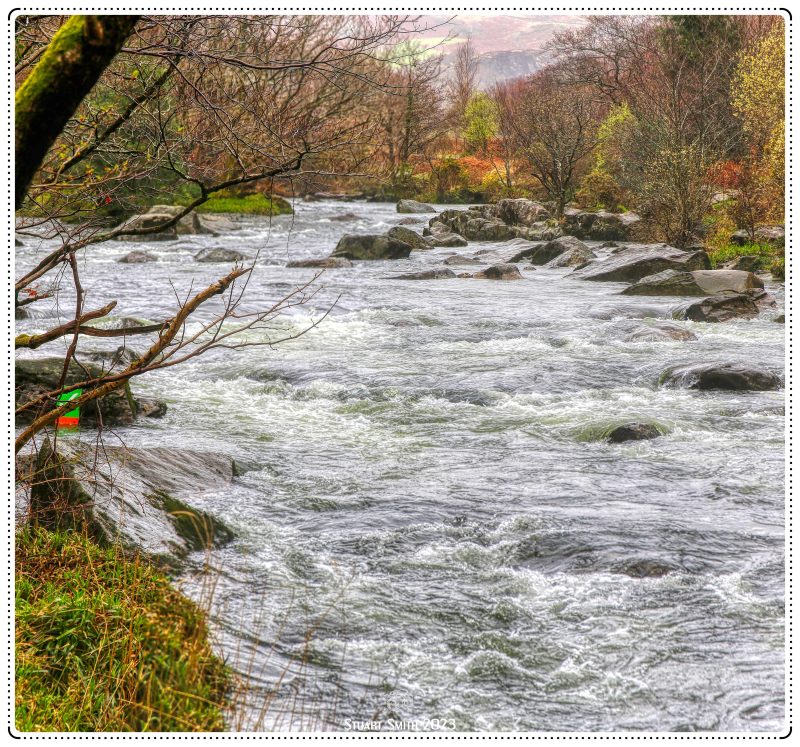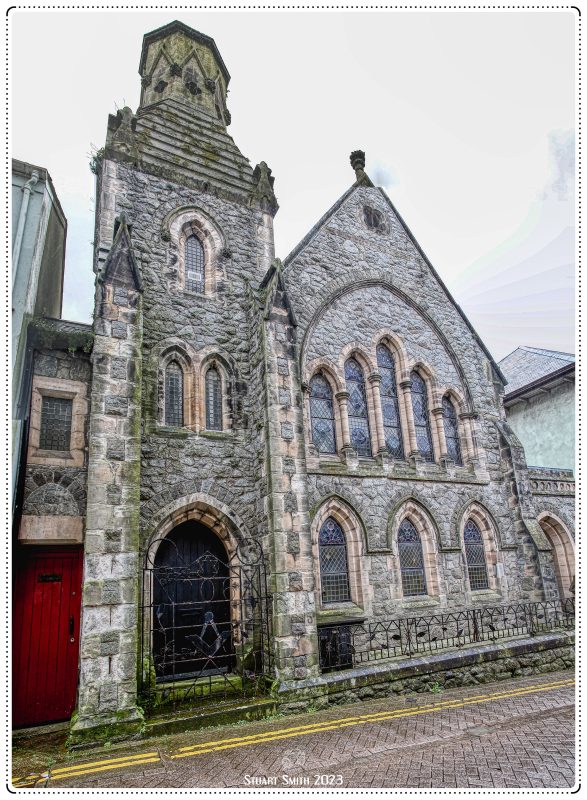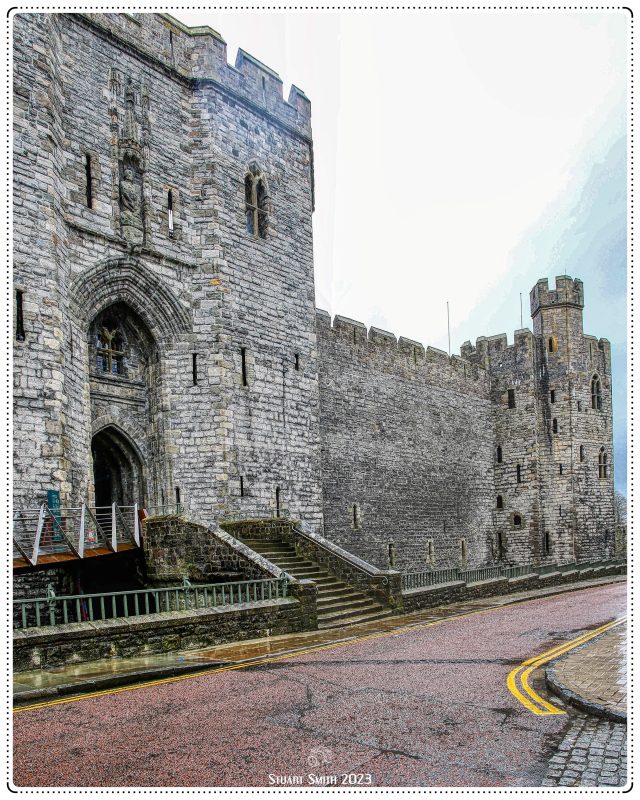After spending the night in the wonderful Market Town of Hay-on-Wye, our next destination is for a few nights in Caernarfon on the shores of the Menai Strait. The drive through Snowdonia is full of scenery.
 Clywedog Reservoir, Llanidloes, Powys, Wales UK
Clywedog Reservoir, Llanidloes, Powys, Wales UK
 Bridge over Afon Croessor, Llanfrothen, Gwynedd, Wales UK
Bridge over Afon Croessor, Llanfrothen, Gwynedd, Wales UK
 Riverside Vegetation, Afon Croessor, Llanfrothen, Gwynedd, Wales UK
Riverside Vegetation, Afon Croessor, Llanfrothen, Gwynedd, Wales UK
 Roadside Marker, Aberglaslyn Pass, Snowdonia, Gwynedd, Wales UK
Roadside Marker, Aberglaslyn Pass, Snowdonia, Gwynedd, Wales UK
 Afon Glaslyn, Aberglaslyn Pass, Snowdonia, Gwynedd, Wales UK
Afon Glaslyn, Aberglaslyn Pass, Snowdonia, Gwynedd, Wales UK
 Road, Aberglaslyn Pass, Snowdonia, Gwynedd, Wales UK
Road, Aberglaslyn Pass, Snowdonia, Gwynedd, Wales UK
 Gallt y Wenallt, Snowdonia, Gwynedd, Wales UK
Gallt y Wenallt, Snowdonia, Gwynedd, Wales UK
We arrive at Caernarfon and wander about.
 Brewer’s Sign, Ind Coope & Allsopp, The Black Boy Inn, Stryd Pedwar a Chwech, Caernarfon, Gwynedd, Wales UK
Brewer’s Sign, Ind Coope & Allsopp, The Black Boy Inn, Stryd Pedwar a Chwech, Caernarfon, Gwynedd, Wales UK
An old metal plate inside the Black Boy Inn. A brewer dating back to 1740s. In 1935 Samuel Allsopp & Sons merged with Ind Coope Ltd to form Ind Coope and Allsopp Ltd. The Allsopp name was dropped in 1959 and in 1971 Ind Coope was incorporated into Allied Breweries.
 Y Bachgen Du (Black Boy Inn), Stryd Pedwar a Chwech, Caernarfon, Gwynedd, Wales UK
Y Bachgen Du (Black Boy Inn), Stryd Pedwar a Chwech, Caernarfon, Gwynedd, Wales UK
One theory suggests that a boy was brought into Caernarfon on a ship, who later became known as ‘Jack Black’ in many local stories, and another suggests that the inn’s name simply refers to a navigational buoy which could be seen in the harbour.
The Black Boy Inn (or just Black Boy) is a hotel and public house in the Royal Town of Caernarfon in Gwynedd, Wales which is thought to date back to 1522, making it one of the oldest surviving inns in North Wales. It is within the medieval walls of Caernarfon, a few hundred yards from Caernarfon Castle.
Prior to 1828, the pub was known as the ‘Black Boy’. Though still referred to by its traditional name, it was officially altered to the ‘King’s Arms’ and, later, the ‘Fleur de Lys’, until a change of ownership led to the restoration of the old name and the creation of the “Black Boy Inn” as it is today. The Inn signs each show a ‘black buoy’ on one side and a ‘black boy’ on the other.
 Old Town Walls, Stryd Pedwar a Chwech. Caernarfon, Gwynedd, Wales UK
Old Town Walls, Stryd Pedwar a Chwech. Caernarfon, Gwynedd, Wales UK
Caernarfon’s town walls are a medieval defensive structure around the townn North Wales. The walls were constructed between 1283 and 1292 after the foundation of Caernarfon by Edward I, alongside the adjacent castle. The walls are 734 m (2,408 ft) long and include eight towers and two medieval gatehouses. The project was completed using large numbers of labourers brought in from England; the cost of building the walls came to around £3,500, a large sum for the period. The walls were significantly damaged during the rebellion of Madog ap Llywelyn in 1294, and had to be repaired at considerable expense. Political changes in the 16th century reduced the need to maintain such defences around the town. Today the walls form part of the UNESCO World Heritage Site
 View to the Castle, Stryd y Plas (Palace Street), Caernarfon, Gwynedd, Wales UK
View to the Castle, Stryd y Plas (Palace Street), Caernarfon, Gwynedd, Wales UK
Sign, The Market Hall, Stryd y Plas (Palace Street), Caernarfon, Gwynedd, Wales UK
The market building which opens onto Palace Street and Hole in the Wall Street was designed by local architect John Lloyd and built in 1832 as a corn market. The large cellars were used to store wine in Victorian times. The large cellars were a bonded warehouse, where imported goods were stored without customs payments being paid. Duties would be paid when the goods were distributed.
 Four Alls, Stryd y Plas (Palace Street), Caernarfon, Gwynedd, Wales UK
Four Alls, Stryd y Plas (Palace Street), Caernarfon, Gwynedd, Wales UK
 Armour Suite, Stryd y Plas (Palace Street), Caernarfon, Gwynedd, Wales UK
Armour Suite, Stryd y Plas (Palace Street), Caernarfon, Gwynedd, Wales UK
 The Palace Vaults, Pen Deitsh (Castle Ditch), Caernarfon, Gwynedd, Wales UK
The Palace Vaults, Pen Deitsh (Castle Ditch), Caernarfon, Gwynedd, Wales UK
 Masonic Hall & Cyngor Gwynedd (Council), Stryd y Castell (Castle Street), Caernarfon, Gwynedd, Wales UK
Masonic Hall & Cyngor Gwynedd (Council), Stryd y Castell (Castle Street), Caernarfon, Gwynedd, Wales UK
Originally an English Methodist Chapel on Castle Street, built in 1877 to replace the 1832 chapel on Pool Street. The chapel is built in the Gothic style of the gable entry type with a tower. By 1995 the chapel builing was in use as a Masonic Hall.
 The Crown, Stryd y Farchnad (Market Street), Caernarfon, Gwynedd, Wales UK
The Crown, Stryd y Farchnad (Market Street), Caernarfon, Gwynedd, Wales UK
 Granary Tower, Castle Walls, Pen Deitch (Castle Ditch), Caernarfon, Gwynedd, Wales UK
Granary Tower, Castle Walls, Pen Deitch (Castle Ditch), Caernarfon, Gwynedd, Wales UK
 Castle Entrance, Pen Deitch (Castle Ditch), Caernarfon, Gwynedd, Wales UK
Castle Entrance, Pen Deitch (Castle Ditch), Caernarfon, Gwynedd, Wales UK
 Derelict Tower of Old Town Walls, Lon Yr Eglwys, Penygroes, Caernarfon, Gwynedd, Wales UK
Derelict Tower of Old Town Walls, Lon Yr Eglwys, Penygroes, Caernarfon, Gwynedd, Wales UK
 Old Library Entrance, Stryd y Castell (Castle Street), Caernarfon, Gwynedd, Wales UK
Old Library Entrance, Stryd y Castell (Castle Street), Caernarfon, Gwynedd, Wales UK
The plate to the right of the arch reads:-
Llyfrgell Sirol Gyntaf Cymru
sefydlwyd yma 1918
The First County Library of Wales
founded here 1918
 “Cartref”, 23 Stryd y Farchnad (Market Street), Caernarfon, Gwynedd, Wales UK
“Cartref”, 23 Stryd y Farchnad (Market Street), Caernarfon, Gwynedd, Wales UK
This is in use as a guest house.
 HMS Conway Anchor, Victoria Dock, Sowth o Ffrans, Caernarfon, Gwynedd, Wales UK
HMS Conway Anchor, Victoria Dock, Sowth o Ffrans, Caernarfon, Gwynedd, Wales UK
Anchor from the HMS Conway at Victoria Dock, Caernarfon. First launched as the HMS Nile in 1839, it was renamed HMS Conway in 1875. The ship was brought to Bangor in 1941 and then to Plas Newydd, just north of Caernarfon, in 1949. The ship was wrecked in the Menai Strait in 1953, and this, one of 2 anchors, is displayed at Victoria Dock in Caernarfon.
 Victoria Dock, Sowth o Ffrans, Caernarfon, Gwynedd, Wales UK
Victoria Dock, Sowth o Ffrans, Caernarfon, Gwynedd, Wales UK
Next up is the castle.





